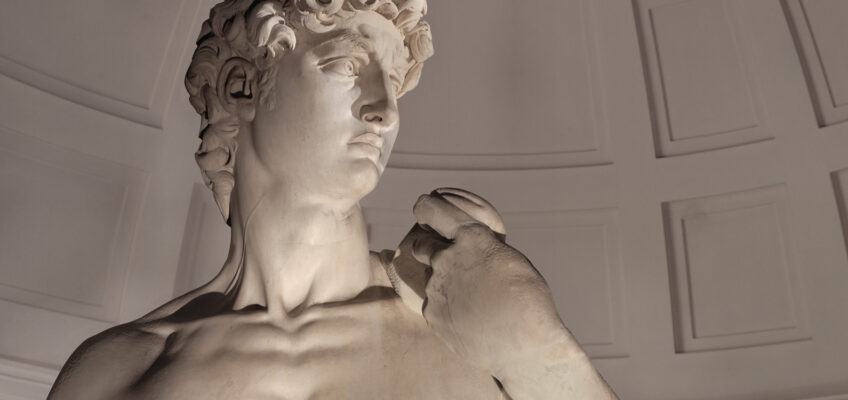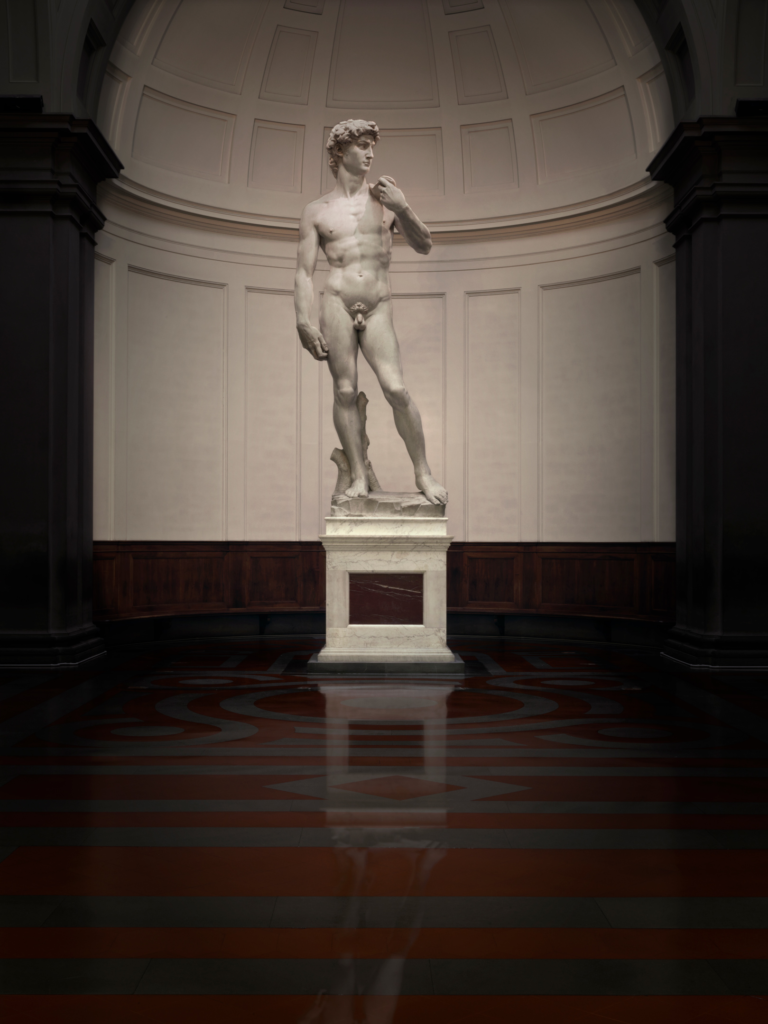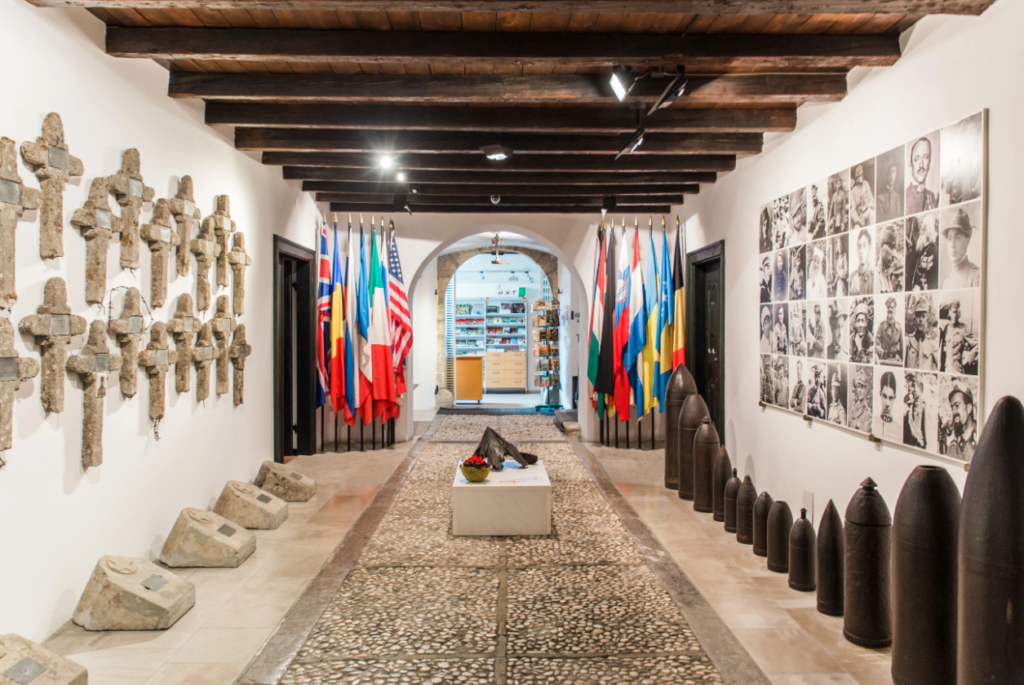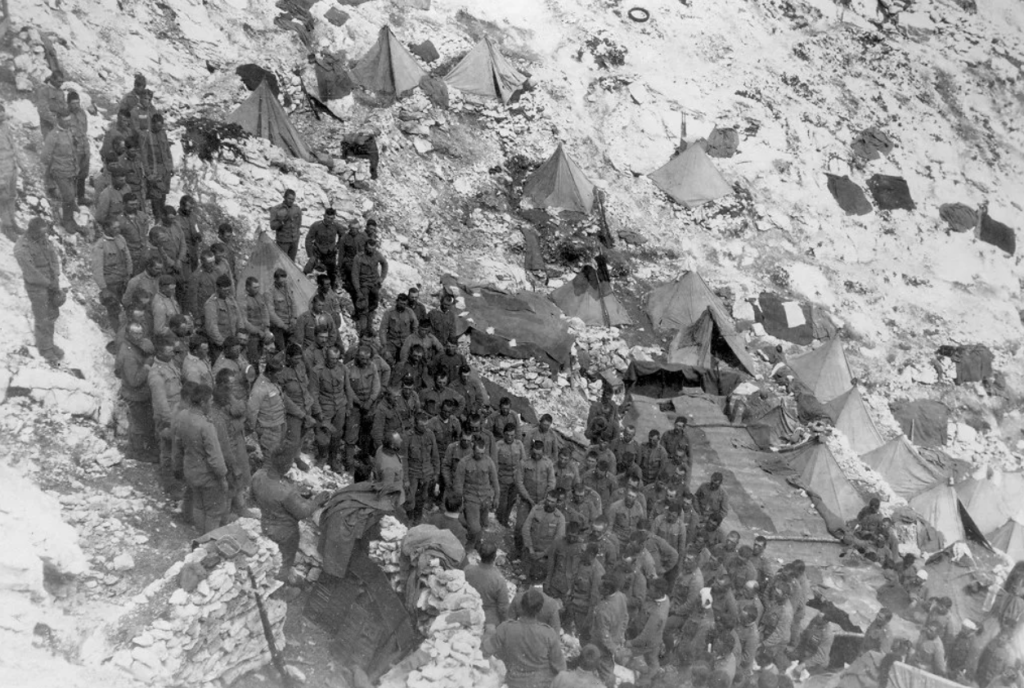There is a long list of great museums (The Louvre, the Prado, the Metropolitan Museum of Art, the Rijksmuseum, the British Museum, the Vatican Museum, the Hermitage, and the Smithsonian, to name a few) that travelers, and even most non-travelers, know about. Many are destinations in and of themselves, reasons to visit the city where they are located. But there are a lot of wonderful, interesting, or just plain quirky museums I loved visiting that are perhaps smaller and not as well-known.
Here are my suggestions for museums you should visit that fall into this “other” category.
There’s no particular order here. I couldn’t begin to rank these. They may not be worth a special trip (though I think some of them are), but all are definitely worth visiting.
Just one caveat: I’m not a big fan of historical museums that display artifacts from the past. Some historical museums have made the list, but these probably show more than vast arrays of arrowheads and pottery shards.
La Galleria dell’Accademia, Florence
I feel a little silly starting with the Accademia, perhaps as well-known and beloved as many larger museums. But it’s pretty small, so here it is.
The Accademia is the home of Michelangelo’s masterpiece, David.
There’s plenty more to see in this great museum. They don’t allow photos, so you’ll have to find them on their excellent website. Michelangelo’s four “unfinished” sculptures of Prisoners (commonly referred to as “slaves” in English), which date between 1519 and 1534, are probably the other highlight, but there are many great paintings and sculptures, plus a nice collection of musical instruments.
2009
I visited the Accademia in during my trip to Tuscany and the Cinque Terre.
The Accademia is open from 8:15 am to 6:50 pm (last admission at 6:20 pm), Tuesday — Sunday. It is closed Mondays, January 1, and December 25. During peak season (typically mid-June to late October), the museum stays open until 10pm (last admission at 9.30pm) on Tuesdays and until 9pm (last admission at 8.30pm) on Thursdays.
Hunterian Art Gallery, Glasgow
The Hunterian is located on the campus of the University of Glasgow. The collection’s thematic grouping makes it very compelling and raises questions for contemplation. Many works by women are on display.
Perhaps the most fascinating part of the Hunterian is the Mackintosh House. Charles Rennie Mackintosh and his wife, Margaret Macdonald Mackintosh, were artists and designers whose style is now world famous. They built and designed their house in Glasgow in the early 20th century, and while the house was destroyed in 1963, it lives on here, with all its original spaces and furnishings.
2023
I visited the Hunterian on my trip to Scotland in the spring of 2023.
Admission to the Hunterian Art Gallery is free, except for some special exhibitions. There is a charge for the Mackintosh House. Hours are Tuesday — Sunday, 10am-5pm. The Hunterian is closed on Mondays.
The Tenement House, Glasgow
Described as “an authentic time capsule of life in early 20th-century Glasgow,” the Tenement House is a museum created from the home of one Agnes Toward, who lived here from 1911 to 1965. In all those years she preserved her furnishings and possessions, making no changes except for the addition of electric lights.
2023
I visited the Tenement House on my trip to Scotland in the spring of 2023.
Admission to the Tenement House is free to members of the National Trust for Scotland; there is an admission charge for non-members. The museum is open daily, 10am-5pm.
Mauritshuis, The Hague
For a small museum, The Mauritshuis is jam-packed with great art by great artists like Rembrandt and Vermeer. it’s also probably more well-known than most of the other museums on this list, but I’m including it anyway.
The most remarkable thing about this painting is the size: nearly 2 1/2 meters high and 3 1/2 meters wide.
“This is one of the most famous paintings in the Mauritshuis. What makes The Bull so special is the fact that Potter painted something as ordinary as a bull on such a grand scale – which had never been done before. And despite this large size, he paid great attention to the smallest details, such as the lark in the sky, the sunshine on the meadow, the flies on the bull’s back and the cow’s whiskers. This made the painting the epitome of Dutch naturalistic painting.”

2016
I visited the Mauritshuis on my “Beltherway” trip.
The Mauritshuis is open almost every day of the year, Monday, 1pm — 6pm; Tuesday — Sunday, 10am — 6pm. Tickets are available on their website, and are for timed entry. Once inside, you can stay as long as you like.
Museum of Apiculture, Radovljica, Slovenia
And now for something completely different!
Beekeeping is a way of life for many individuals, families, and communities in Slovenia. In fact, in 2022, UNESCO inscribed Beekeeping in Slovenia on the Representative List of the Intangible Cultural Heritage of Humanity.
The Museum of Apiculture, in the small town of Radovljica, near Lake Bled, celebrates the tradition of beekeeping in Slovenia. As their website eloquently states,
The museum provides an insight into typical bee habitation, describes the meaning and symbolism of bees, and acquaints visitors with a vast range of beekeeping literature.
The museum’s greatest exhibit is the extensive collection of decorative beehive frontal panels. These panels are specific to Slovenia only and are a true speciality of Slovenian folk culture.
Part of the permanent exhibition is dedicated to the life of the Carniolan bee (Apis mellifera carnica Pollman), an indigenous Slovenian bee species that is considered part of the country’s natural heritage. Visitors can also see a Carniolan grey bee family in the observation hive from May to October, which is a particularly special experience.
The museum also showcases many trades that have evolved around beekeeping, such as candle-making and honey bread making (lectarstvo).
2014
I visited the Museum of Apiculture on my Balkans trip.
The museum is open every day except Monday, January 1, Easter, November 1, and December 25, from 10am — 6pm.
Mindalae, Quito, Ecuador
Mindaláes were merchants of pre-Columbian lands in what is now Ecuador. This museum, whose full name is Museo Etnóhistorico de Artesanías del Ecuador “Mindalae,” celebrates the traditional crafts of indigenous peoples.
The museum has five floors:
- An ethnographic exhibition about the indigenous peoples of the Amazon
- Characters from the cultures originating on the coast of Ecuador
- The use and management of forest resources
- Clothing, fabrics and various ceramic traditions
- The Andean worldview and rituality
2014
I visited Mindalae on my OAT tour to Peru and Ecuador in 2022.
Mindalae is open Monday through Saturday, 9am — 5pm.
Gladstone’s Land, Edinburgh
Gladstone’s Land, in one of the oldest buildings in the city, provides an immersive experience of what the lives of residents might have been like over three centuries. The original building dates from 1550, but a prosperous merchant, Thomas Gledstanes, and his wife, Bessie Cunningham, bought it and redeveloped it in the early 17th century. They resided on the upper floors and rented out the lower floors.
The National Trust for Scotland, which owns and operates the museum, saved the building from demolition in the 1930s and carried out a careful restoration. It underwent an extensive renovation in 2020 and 2021 and opened as a museum. Each floor showcases a different period and displays furnishings that might have been in place at the time.
2023
I visited Gladstone’s Land on my trip to Scotland in the spring of 2023.
Gladstone’s Land is open daily from 10am — 3pm. At 3pm it is open via a guided tour. Specialist social history tours are also available on certain days at 4pm. The museum is closed between December 24 and January 13.
The Georgian House, Edinburgh
The Georgian House is a counterpart to Gladstone’s Land, representing a different era of architecture. Because of overcrowding in what we know as the Royal Mile, Edinburgh expanded northward. Prestigious Georgian townhomes overlooked elegant squares and housed wealthy families and their servants. The Georgian House is an authentic look at what life would have been like for one of these families.
Before touring the museum, a short film illustrates what life would have been like for a family living here in the late 18th century. As you wander through the museum, docents dressed in period costume provide excellent descriptions of what you see in each room.
2023
I visited the Georgian House on my trip to Scotland in the spring of 2023.
Opening hours are generally 10am to 5pm. The museum closes each year between late November and late January, and it closes at 4pm in November, late January, and February. Last admission is one hour before closing.
Museum of Miniature Books, Baku, Azerbaijan
This charming and tiny museum consists of 39 glass cases in one room displaying more than 5,800 books smaller than 100mm x 100mm. Of those, 3,500 are smaller than 75mm x 75mm, the standard set by the Guinness Book of World Records, making this the largest such collection in the world. The smallest book in the collection is .75 x .75mm, 22 pages, a Japanese book with illustrations of flowers.
2022
I visited the Miniature Book Museum on my trip to Turkey and the Caucasus.
Located in Baku’s Old Town, the Miniature Book Museum is open Tuesday, Wednesday, Friday, Saturday, Sunday, from 11am to 5pm. Admission is free.
Mucha Museum, Prague
Czech artist Alphonse Mucha was born in South Moravia in 1860. He worked first in Vienna and then in Paris, where he designed posters for Sarah Bernhardt. He spent four years in the United States before returning to Prague in 1910. There he spent the rest of his life. He died in 1939 shortly after being arrested by the Gestapo, when the Nazis occupied Czechoslovakia.
The Mucha Museum, which opened in 1998, is the only museum dedicated to Mucha’s work. It is a must-see for anyone who enjoyed Art Nouveau. The exhibit comprises seven sections: Decorative Panels, The Parisian Posters, Documents Décoratifs, The Czech Posters, Oil Paintings, Drawings and Pastels, and Photographs and personal memorabilia of the artist.
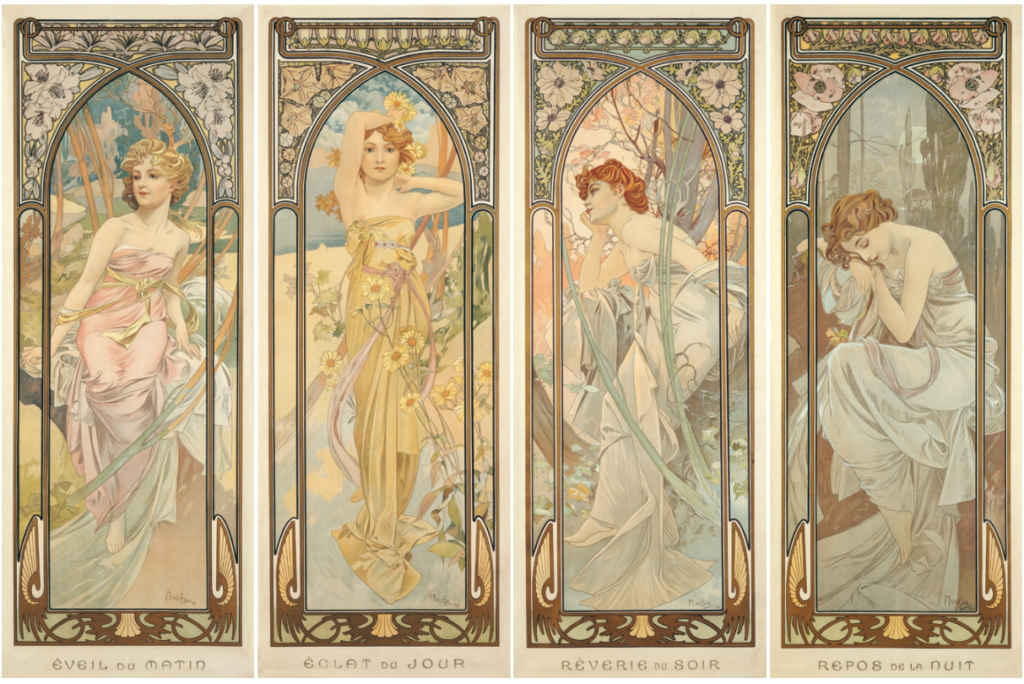
2019
I visited the Mucha Museum on my Central European trip.
The Mucha Museum is open daily from 10am to 6pm.
Museo de la Mola, Panama City
The Mola is a hand-made woven textile, part of the traditional women’s clothing of the indigenous Guna people of Panama. Based on techniques of geometric design in naturally-available colors used for body painting, the designs came to be woven into fabrics brought over by Spanish explorers.
The Mola Museum (MuMo) in Panama City’s Casco Viejo opened in 2017 following the acquisition of several collections of molas. The permanent exhibit includes about 200 molas.
All over Casco Viejo I encountered women selling molas, and I bought one from one of these street vendors. The museum displays them artistically in five exhibits:
- Technique and Evolution of the Mola
- Cosmovision
- Surroundings
- Layers
- Molas and Storytelling
2023
I visited the Mola Museum on my trip to Panama and Colombia.
The museum is open Tuesdays to Fridays, 10am – 4:30pm, Saturday and Sundays, 10am – 5pm. Admission is free.
There is also an online mola museum at https://molamuseum.org/. As best I can tell, this “virtual” museum is not affiliated with the one I visited.
Tunnel Museum, Sarajevo
During the Bosnian War, Sarajevo was under siege by Serbian forces. Lasting from April 5, 1992, to February 29, 1996, this was the longest siege in modern European history.
Volunteers dug the Sarajevo Tunnel, also known as the Tunnel of Hope, in the first half of 1993. It provided a passageway for food and humanitarian aid to come into the city, and for people to get out. The tunnel was one of the major ways of bypassing the international arms embargo and providing the city defenders with weaponry.
The Tunnel of Hope was about 960 meters long, 1.5 meters high and about 1 meter wide. During the time it was used, an estimated 20 million tons of food entered the city, and 1 million people passed in and out of it.
Today a museum is located in the house that hid the southern entrance to the tunnel. Aside from historical displays, 20 meters of the tunnel remain open for visitors to enter and get a feel for the experience of passing through.
2014
I visited the Tunnel Museum on my trip to the Balkans.
The Tunnel Museum is open Monday through Saturday. Between April and October, the hours are 8:30 am to 5:30 pm. From November to March, the hours are 9am to 4pm. Last entry is one half hour before closing.
Museo de Arte Prehispánico de México Rufino Tamayo, Oaxaca
What I loved about this museum is that it is an art museum. Yes, it is filled with relics from long ago, but they are presented and displayed as works of art, not as historical artifacts.
Here’s what a placard at the museum says:
This museum is dedicated to Mexican art of the pre-colonial era
With the exception of the western region of Mexico, this art was entirely inspired by pre-Columbian religions and myths. It manifests and represents deified nature: sun, wind, water, and a multitude of other elements. However, the feeling we have in front of these objects and sculptures is not a religious one. Ancient Mexican religions have been left in the past and forgotten. We are touched by the aesthetic quality of these works of art: their beauty, their strength, and the high originality of their style.
For the first time, treasures from indigenous people from the past are presented like aesthetic phonomena, like works of art, in a Mexican museum.
I found the work here to be as profound it is beauty of artistic expression as at any other art museum I’ve visited.
I have an album of 48 photos from the museum.
2024
I visited the Museo de Arte Prehispánico during my two week stay in Oaxaca.
The museum is closed on Tuesdays. It is open Sundays from 10am to 3pm. All other days it is open from 10am to 2pm and from 4pm to 7pm. Admission is free. They have a Facebook page, and you can also find more information about Olga and Rufino Tamayo, who established this collection, at https://www.rufinotamayo.org.mx/.
Kobariški muzej, Kobarid, Slovenia
This is an excellent museum for lovers of military history. It tells the story of the World War I battles that were fought in the Soča Valley, also known as the Isonzo Front.
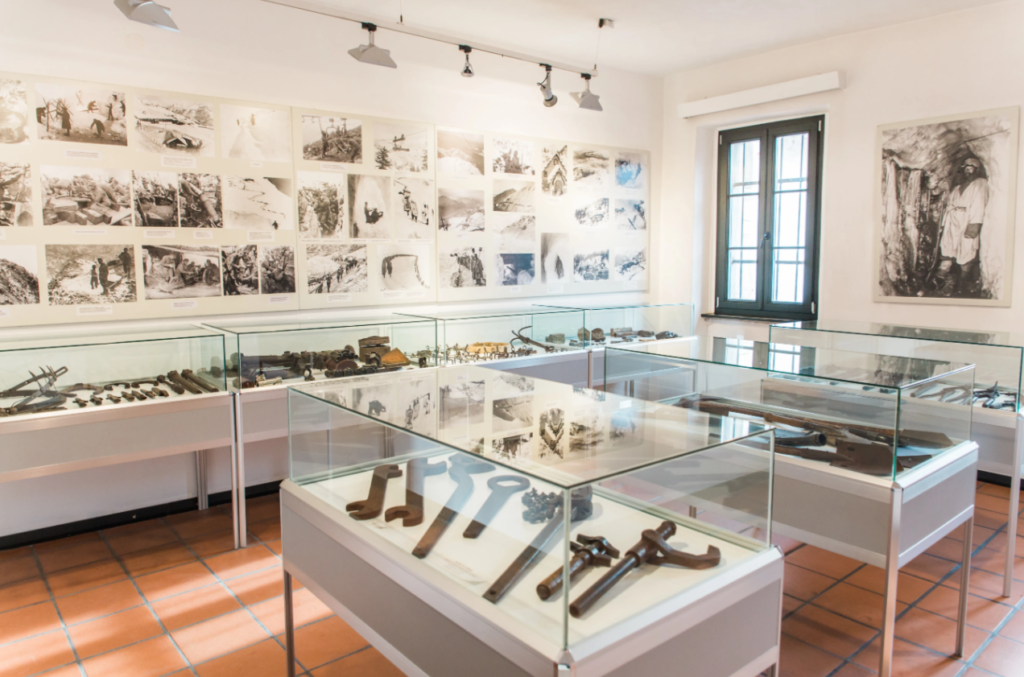
There are a lot of artifacts, which isn’t my favorite thing, but many of the photographs displayed at the museum provide a vivid picture of what the conditions were for the soldiers during the war.
You can find more photos from the museum at https://www.kobariski-muzej.si/en/exhibition/permanent-exhibition/.
But for me, the best thing about this museum is that it serves as an introduction to the truly spectacular Kobarid Historic Trail. This 5‑kilometer hike takes you through the sites where the fighting took place, as well as other interesting and scenic locations, including the azure waters of the Soča River and the Kozjak Waterfall.
2014
I visited the Kobarid Museum and walked the Kobarid Historic Trail on my Balkan trip.
The Kobarid Museum is open every day. Hours vary throughout the year.
I will continue to add additional museums to this list (as I visit them or as I remember them).

